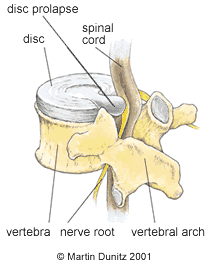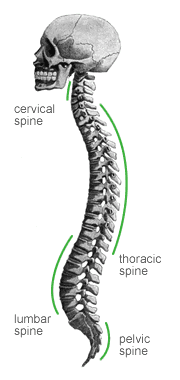| Common Signs & Symptoms | |||||
| Pain | Swelling | Stiffness | Weakness | Instability | Locking |
Herniated Disc Injury Explained
Herniated discs occur most often in the lumbar spine (lower back) and are a frequent cause of back pain. This common back injury is sometimes referred to as a slipped disc’ but this is a crude description of what may happen.
The discs are located between each vertebra (the bones which make up the spinal column). These discs consist of a tough outer fibrous layer that surrounds a gel-like nucleus. Repeated overuse especially during forward bending, lifting, and sporting activities can lead to degeneration of the outer layer of the disc. If this degeneration is sufficient the nucleus material is liable to prolapse out of the disc. The material cannot move directly backwards due to the spinal column, therefore the nucleus is forced either to the space on the left or the right of the vertebra.

Herniated Disc Signs & Symptoms
Usually one offending movement (most commonly bending or lifting) will put too much strain on the weakened outer part of the disc, which tears and allows the gel from the inside of the disc to protrude out. As the gel material leaks out of the disc, the onset of pain in the back can be sudden and severe. This back pain is due to chemical reactions from the gel material touching tissues in the back and also from pressure as the disc gel pushes against soft tissues in the back.
If the Herniated disc pushes against a nerve root in the spine then pain can be referred down the course of the nerve. In the lower back if the nerve roots are put under pressure by the Herniated disc, then pain, weakness and altered sensation can be referred down the Sciatic nerve to the buttock, hamstring, calf and foot. This is known as Sciatica.
This back pain and Sciatica may be relieved by changing position, but it can often be made worse by flexed postures such as sitting and bending. Coughing and sneezing increase the pressure within the disc and this can also make the back pain and Sciatica worse.
A Physiotherapy assessment can diagnose a herniated disc, where needed the injury will be confirmed with an MRI scan of the back to accurately diagnose and depict the size and direction of the prolapse. However, the size of a disc prolapse is not necessarily related to the level of pain reported by the patient. Scientific studies have shown that patients with a large disc prolapse may not report any symptoms. The pain is thought to correlate to the structure that is being “pinched” by the disc, such as a nerve.
Anyone with back pain who has any of the following should consult their doctor as soon as possible:
- History of trauma e.g. a fall or car crash
- Aged younger than 20 or older than 55 when you first experienced back pain
- Cancer in the past or present
- Unexplained weight loss
- Prolonged use of Steroid medication
- Immunosuppression / history of IV drug use
- Numbness or weakness in the legs
- Unremitting pain
- Bladder or bowel problems
- Fever
Herniated Disc Treatment
What you can do
| Consult a sports injury expert | |
| Remain active and apply heat packs for pain relief | |
| Wear a back brace to improve posture & relieve pain | |
| Use a back stretcher to assist the healing process | |
| Exercise with a Swiss Ball to increase lower back muscular stability | |
| Practice exercises to strengthen spine supporting muscles |
Pain-relieving medication is usually necessary for a Herniated disc, and Heat Packs are usually necessary during the first few days, but the best available evidence suggests that patients with a Herniated Disc should be advised to remain as active as they possibly can, so long as their symptoms are not aggravated. This is based on the fact that research shows no significant difference between bed rest and staying active, and that there is no evidence that staying active is harmful for either severe low back pain or Sciatica. If tolerated, walking on flat ground or swimming can help ease the pain and symptoms of disc herniation. Prolonged sitting, lifting or forward bending should be avoided until symptoms start to resolve. A Back Brace can be helpful to improve posture and relieve pain by preventing aggravating movements and providing support for the injured structures.
In many cases of a Herniated disc, depending on the direction of the prolapse, the symptoms can be relieved if the patient gets into a position of spinal extension. This can be achieved by lying on their front and gently propping the shoulders up on the elbows. This position can be used as a corrective exercise to counteract the pressure that has built up form flexing forwards. If it is too painful at first, lying on your back with the hips, knees and ankles positioned to 90 degrees with the support of a stool, sofa or similar underneath the calves has been shown to provide the most relief on inter-disc pressure. Alternatively where the symptoms are more severe, the Back Stretcher can help to relieve back pain by the user simply lying on their back over this simple device. In a lot of individuals this puts the spine in the opposite position to that in which the injury occurred. This encourages the nucleus gel to recede back into the disc.
Manual therapy in the form of spinal manipulation has also been shown to be effective in the treatment of disc related problems and Sciatica. This can relieve nerve root compression caused by fibrous scar tissue following a disc prolapse, or the build up of gas (Nitrogen). This gas build up is a consequence of disc degeneration and tends to be more common in those aged over 40.
The outer layer of the disc will heal with scar tissue over a period of six to twelve weeks, but the disc may be vulnerable to re-injury as there is likely to be a predisposition to re-injury, because of the factors that contribute to the original herniated disc, such as poor posture, lack of muscular stability, and sporting and working habits that place large stresses on the discs. For this reason, and to reduce the chances of a recurrence, the patient should follow the rehabilitation program set by a Chartered Physiotherapist. This will involve regaining the range of movement in the lumbar spine and strengthening the muscles which stabilise and support the back. Postural advice will also be given in relation to the individual work and social circumstances. Advice on seated positions at desks or adaptations to driving can be given to help reduce the risk of re-injury. A lumbar support may be useful to help maintain the lordotic curve at the base of the spine when sitting for extended periods.
Research has shown that specific exercises, known as core stability and strength exercises, can be effective in relieving back pain and restoring normal function. These exercises are most effective where the problem is caused by poor postural habits and the pain resulting from disc problems. The Stabiliser Pressure Biofeedback Device is very useful for learning these specific exercises. Once the correct technique has been mastered under the guidance of a Chartered Physiotherapist , these exercises are very easy to do. They are not too vigorous and they can be done by people of all ages. More advanced exercises using Swiss Balls can then be used to relieve and prevent back pain.
Most Herniated discs tend to settle down with physiotherapy treatment, but severe cases of Sciatica may require steroid injections or even surgery. Caudal Epidural Steroid Injections (ESIs) bathe the nerve roots in fluid that reduces inflammation. They can be very effective in relieving the symptoms of Sciatica.
Herniated Disc Prevention
What you can do
| Use a seat support to improve posture whilst sitting | |
| Practice exercises to strengthen spine stabilising muscles |
Following a Herniated Disc there is always a danger of a recurrence of the problem. In order to avoid a recurrence of the problem it is important to take better care of the back in future. An understanding of good posture is necessary to achieve this. Viewed from the side the spine consists of a series of curves:


These natural curves increase the load-carrying capability of the spine and can be lost with prolonged postures such as sitting, driving or computer work. The lumbar part of the spine consists of a forward curve and as long as this is maintained, posture will be reasonably good. It is important that this improved posture is maintained during all activities, particularly when sitting for long periods – slumping should be avoided. A Lumbar Roll placed at the bottom of the back can be effective when sitting to maintain the lordotic curve. Driving for long periods should be avoided or regular breaks should be taken and stretches into extension (backwards) can help counter balance the excessive forward pressure on the discs with sitting.
In the long term, good posture is maintained by increasing the muscular stability of the spine but breaking poor postural habits will greatly help in day to day maintenance of back pain and stiffness. An effective aid to improve sitting posture is a Sitting Support that can be used when driving or when sitting in the office. These work by supporting the forward curve at the bottom of the back which facilitates good posture and improves the load bearing characteristics of the back.


